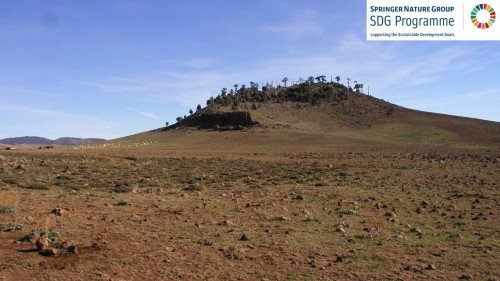Play all audios:
Drylands occupy over 40% of the Earth’s land surface but there are many challenges to organisms colonizing these environments, such as aridity and extreme weather conditions. Despite these
challenges, drylands support a high level of biodiversity that has developed many different adaptations for survival in harsh environments. This biodiversity also has a major role in many
biogeochemical cycles, which together with their wide geographical extent makes drylands a key part of the biosphere. However, the expansion of agriculture and other human activities are
having a large impact on fragile dryland ecosystems, altering their functioning and jeopardizing the delivery of the many ecosystem services they provide. This Collection compiles research
devoted to understanding the ecological and evolutionary patterns and processes of dryland biodiversity. Such research ranges from the description of genetic and phylogenetic diversity or
the use of new methods and remote sensing for biodiversity monitoring, to the development of a more functional understanding of the ecological dynamics and resilience of these ecosystems,
including the role of keystone species and the relationships between biodiversity, ecosystem functioning and ecosystem services. The Collection also focuses on the new challenges that global
change is imposing on these ecosystems, including the impacts of climate change, extreme events, land degradation and desertification. The development of specific conservation strategies
for threatened dryland species, the incorporation of plant-soil feedbacks in dryland biodiversity conservation and the restoration or sustainable management of dryland biodiversity are also
crucial for dryland research. THIS COLLECTION SUPPORTS AND AMPLIFIES RESEARCH DIRECTLY RELATED TO SDG 15, SDG 13, AND WITH SIGNIFICANT IMPACTS ON SDG 2 AND SDG 6.

